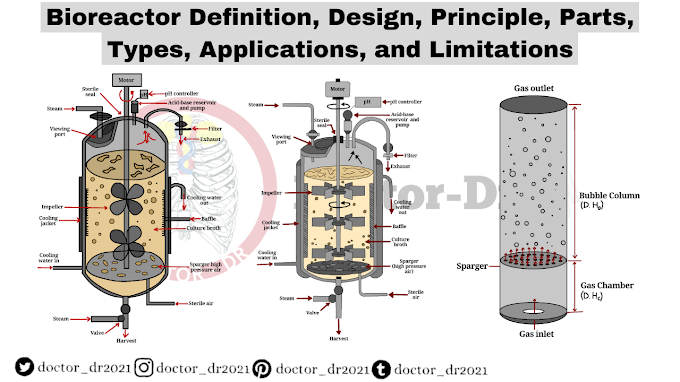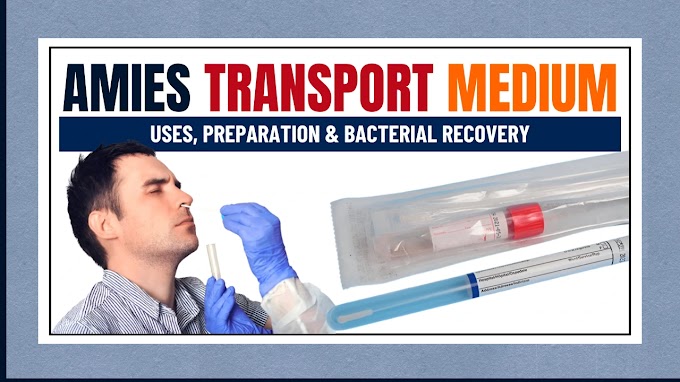Table of Contents
- Introduction to Vermicomposting
- Methods of Vermicomposting
- Materials Required in Vermicomposting
- Process of Vermicomposting
- Earthworm species used in Vermicomposting
- Characteristics comparison of different earthworm species for the vermicomposting process
- Optimal Conditions for Earthworms in Composting Materials
- Mechanisms of Vermicomposting
- Harvesting of Vermicompost
- Storage of Vermicompost
- Characteristics of vermicompost
- Precautions to be taken for Vermicomposting
- Significance of Vermicomposting
Introduction to Vermicomposting
Vermicomposting is an eco-friendly biotechnology that transforms organic household waste into nutrient-rich manure through the activity of earthworms.
- In this process, earthworms consume and break down raw organic material, releasing valuable nutrients into the soil. As a result, this organic material is often referred to as "worm compost," "worm casting," or "vermicast."
- Vermicompost, produced by earthworms, is their excretion and is rich in humus, microorganisms, and beneficial hormones like auxins. It also contains enzymes such as cellulases, chitinases, and proteases, which contribute to nitrogen mineralization in the soil.
- The practice of breeding and managing earthworms in a controlled environment for composting purposes is known as vermiculture.
- Vermi technology combines vermiculture and vermicomposting, creating an efficient system for organic waste management.
- As an effective tool for organic farming, vermicomposting supplies essential nutrients to the soil, ensuring long-term fertility without the negative impacts associated with chemical fertilizers.
Methods of Vermicomposting
The vermicomposting process can be done in a number of ways. A few of them are explained as follows:
- Bin Method: In this method, vermicomposting is carried out in a closed container equipped with proper drainage and ventilation. This approach is typically used for small-scale vermicompost production.
- Bed Method: A bed made of wood or bricks is set up on the ground where organic matter and earthworms are placed. For large-scale production, trenches or raised beds are created to accommodate larger quantities of organic material, providing ample space for the process.
- Pit Method: A shallow trench or pit is dug, where organic waste and earthworms are placed. The pit is then covered with organic materials like straw, grass, or dry leaves to help regulate temperature and moisture levels.
- Heap Method: Organic waste and earthworms are arranged in a heap directly on the ground and covered with materials like straw or dry leaves. This is one of the traditional methods of composting.
Materials Required in Vermicomposting
- Land
- Water
- Sand/soil
- Biodegradable agricultural waste
- Shredded paper/cardboard
- Cow dung
- Poultry litter
- Shade
- Straw and dried leaves
- Pit/container
- Gunny bags
- Earthworms
Process of Vermicomposting
Vermicomposting methods differ, but the process involved is the same:
1. Vermicomposting Site Selection
- Choose a location that is sheltered from harsh weather conditions.
- Ensure there is adequate space for the feedstock.
- A reliable water source must be available.
- The environment should support the survival and reproduction of earthworms.
2. Preparation of Manure Stockpiles
- Place dried manure in the designated area.
- Remove unwanted debris such as stones, thorns, and weeds.
- Ensure that all materials are chopped or ground to a size of less than 10 mm for efficient mixing with the organic matter.
3. Pre-decomposition of Feedstock
- The prepared stockpiles must undergo pre-decomposition before being introduced to the earthworms.
4. Preparation of Vermicomposting Beds
- Construct raised beds measuring 1.2 to 1.5 meters wide and 0.3 meters high, including drainage holes.
- Thoroughly moisten the soil or ground surface.
- Layer the bed with dry plant materials like wood chips, dry leaves, or grass, followed by a 20 mm layer of neem leaves, and then a 0.3 mm layer of manure to promote better air circulation.
5. Materials Moistening
- Sprinkle water on each layer, as this is crucial for initiating the decomposition process.
- If the materials are too dry, soak them in 100-200 liters of water before layering.
6. Earthworm Introduction
- Introduce the earthworms 5-10 cm below the surface of the bed.
- Cover them with straw, broad leaves, or gunny bags to block sunlight and provide cooling for the vermin bed.
7. Maintenance of Vermicompost System
- Water the vermin bed two to three times a week.
- Turn the materials in the bed every two to three weeks to facilitate compost maturation.
8. Harvesting Vermicompost
- After 2-3 months, depending on the area size and number of worms used, the compost is ready for harvest.
- Stop watering before harvesting to allow the top layer of the manure to dry.
- Remove any undecomposed materials and worms, then dry the final product separately for a few days.
Earthworm species used in Vermicomposting
Choosing the appropriate species of earthworm is crucial for successful vermicomposting, as the entire process relies on vermiculture, with their castings being the final product. The nutrient content of vermicompost is influenced by the species of earthworm and the types of feed they consume. As a result, there has been a growing interest in Eisenia fetida and Eudrilus eugeniae, both of which are epigeic species known as red wigglers and are classified as surface feeders.
These earthworms are effective agents in vermicomposting due to their beneficial characteristics. They thrive within a broad temperature range of 0 to 40 °C, with an optimal range of 20 to 30 °C that promotes rapid growth and maturation. They exhibit a high rate of organic matter consumption, digestion, and assimilation, along with a greater tolerance for environmental stress compared to other earthworm species. Additionally, their shorter life cycle enhances their suitability for vermicomposting over other species.
These worms are typically introduced at a rate of 3,000 to 4,000 individuals per square meter of bed size.
Characteristics comparison of different earth worm species for the vermicomposting process
Optimal Conditions for Earthworms in Composting Materials
- Moisture: The ideal moisture content should be between 60-70%. Outside of this range, worms may die.
- Aeration: Adequate aeration should account for 50% of the total pore space.
- Temperature: The optimal temperature range is between 18°C to 35°C, with insulation provided to protect against freezing temperatures.
- pH: The pH level should be maintained between 6.5 and 7.5.
Under suitable conditions, red worms can consume an amount of organic matter equivalent to their body weight in a single day. However, it typically requires around 2 kg of earthworms to recycle 1 kg of organic waste within a 24-hour period. Additionally, worms located in the top moist layer of bedding can disappear into the bedding within minutes.
Mechanisms of Vermicomposting
When worms consume organic material, it undergoes transformation as it passes through their digestive system.- Gizzard Function: The gizzard processes the material into particles smaller than 2 μm, significantly increasing the microbial surface area available for decomposition.
- Digestive Enzymes: The ground material is then exposed to enzymes such as proteases, lipases, and amylases, which digest proteins, lipids, and carbohydrates.
- Enzyme Action in the Gut: In the gut, cellulases and chitinases are released into the lumen, along with associated microbes. These enzymes facilitate the breakdown of complex compounds into simpler forms.
- Cast Production: The resultant digested material is excreted as castings, contributing to the growth and sustainability of the worms.
- Mucus Secretions: Mucus secreted by the gut wall provides additional local protection and stability to the vermicompost.
Harvesting of Vermicompost
After a few months, the collected worm castings need to be harvested from the compost. The castings, which are several inches deep, appear as dark brown, crumbly, earthy material. It is important to remove the earthworms during the harvesting process, though some may remain despite screening, which is not a significant issue. Additionally, worm eggs, which are lemon-shaped and vary in color from white to brown, may be found during harvesting. If possible, these eggs should also be collected, as they can be used for the next batch of vermiculture.
The harvested vermicast can be collected using the following methods:
The Food Migration Method
In this approach, the entire composting material is shifted to one end of the bedding while fresh bedding is prepared on the other side. Worm food is placed on the newly prepared bedding, encouraging the worms to migrate over to the fresh food source. After about a week, the castings can be harvested from the original side once the worms have moved.
The Light Method
Red wigglers, in particular, are sensitive to light and tend to burrow deeper when exposed to it. By removing the top layer of bedding, the worms will move deeper into the compost. This process can be repeated several times to gradually collect the castings with gentle handling.
Storage of Vermicompost
Once the compost is harvested, proper storage is essential to preserve the physical, chemical, and microbiological properties of the vermicompost. It is important to store the compost in breathable containers, such as cardboard boxes, wooden crates, or sacks, while maintaining a moisture content of 40-60% and keeping it at an optimal temperature in a cool, dry location.
Additionally, all materials used for storage and the storage area itself must be sterilized to prevent cross-contamination of microorganisms. When stored correctly, the quality, nutrient content, shelf life, and microbial activity of the compost will remain intact.
Characteristics of vermicompost
Physical Characteristics:
- Soft texture
- Spongy consistency
- Earthy aroma
- Dark brown coloration
Chemical Characteristics:
- pH:7.6
Microbiological Characteristics:
- Total Bacterial Count: More than 10^10
- Microorganisms Present: Includes Actinomycetes, Fungi, Azotobacter, and Rhizobium
Precautions to be taken for Vermicomposting
- Avoid Plastic Covers: Using plastic sheets to cover beds or heaps is not advisable, as they can create a greenhouse effect, trapping air and gases in the vermicompost bed or heap.
- Monitor Overloading: Overloading the compost can raise the temperature, which is detrimental to the worms.
- Manage Moisture Levels: Worms cannot survive in excessively dry conditions and will migrate when the ground becomes waterlogged.
- Watering Schedule: During the summer months of June, July, and August, daily watering is ideal. In the rainy season (December to February), watering once a week is sufficient, while in winter, watering every third day is recommended.
- Limit Acidic Additions: Avoid adding highly acidic substances, such as tomatoes and citrus waste, to the compost pile.
- Drainage Management: In rainy weather, take measures to prevent water accumulation, particularly in regions with high rainfall. Building a drainage channel around the heap may be necessary.
- Use Organic Materials: Ensure that composting materials are organic and easily decomposable, avoiding non-degradable items like stones, glass, and plastics.
Significance of Vermicomposting
- Nutrient-Rich Fertilizer: The balanced physical, chemical, and microbiological properties of vermicast make it an excellent natural fertilizer that enhances soil structure, moisture retention, and nutrient content.
- Support for Organic Farming: Vermicomposting promotes organic farming practices in gardening and sustainable agriculture.
- Natural Pest Control: It serves as an effective alternative to chemical pesticides and insecticides.
- Increased Crop Yields: Vermicomposting ensures optimal crop yields by providing plants with a balanced supply of essential macronutrients and micronutrients throughout their growth cycle.
- Ease of Application: Vermicompost is free-flowing and easy to apply, making it user-friendly for farmers and users alike.
- Environmental Benefits: With a growing focus on environmental conservation and waste recycling, vermicomposting is an eco-friendly option.
- Home Composting: It can be easily implemented in households on a small scale, allowing individuals to convert organic waste into valuable compost without the need for elaborate setups, thus creating potential sources of income.
- Food Security and Safety: With a global push for food security, vermicompost is toxin-free when used in agriculture, leading to the production of chemical-free vegetables and fruits.












